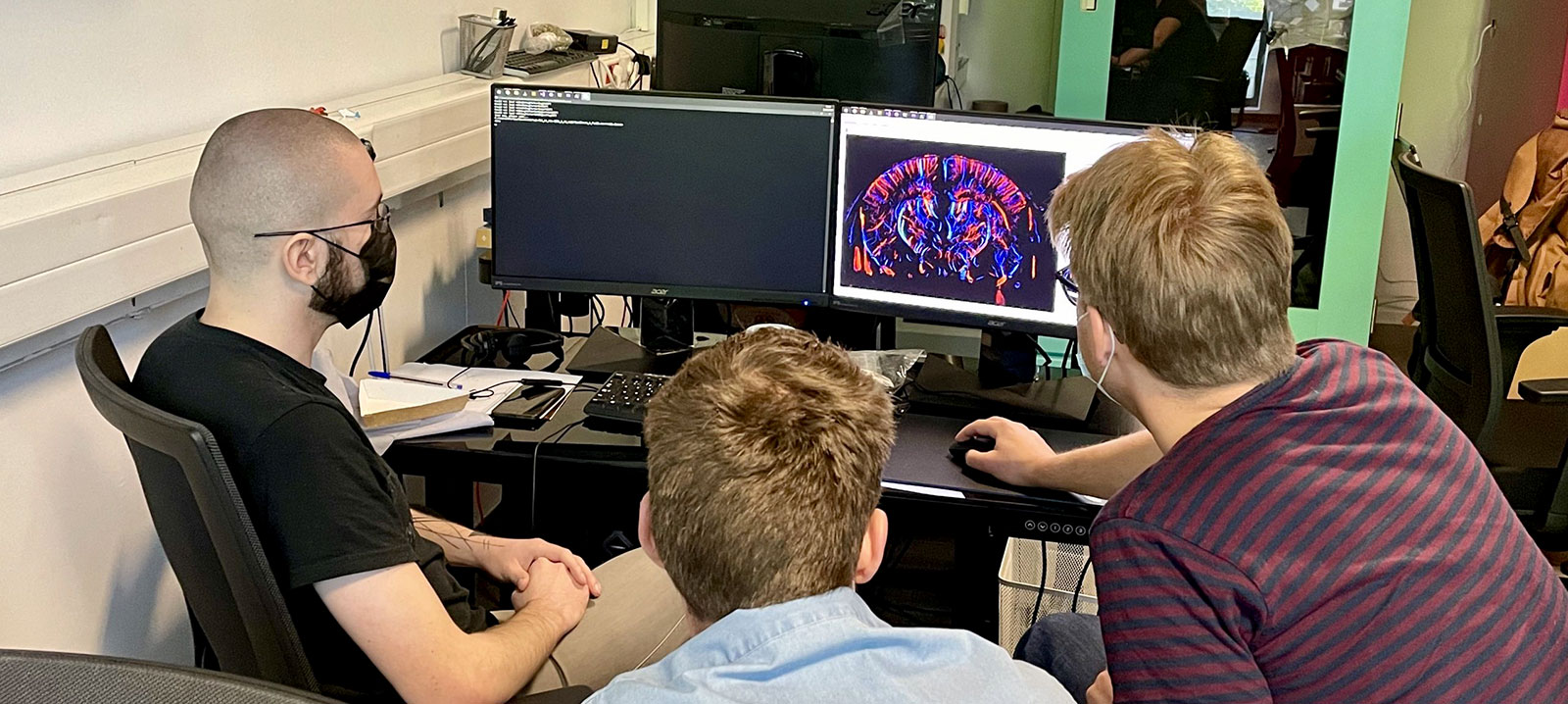Iconeus software aids development of fUS-driven brain–machine interfaces
Brain–machine interfaces offer the prospect of allowing people with paralysis to control objects based purely on their thoughts. To explore new ways of making this a reality, we’ve been helping researchers develop software to interpret brain activity using fUS – and the first results from an investigation into on-line monitoring using this method have now been published in the journal Nature Neuroscience.
Controlling machines using just the power of thought, previously the realm of science fiction, has in the last few years started to show promise, especially for helping people with chronic paralysis, and potentially those with neuropsychiatric disorders. These devices, known as brain–machine interfaces (BMIs), have already been investigated for communicating by decoding brain activity involved in handwriting and speech, and for controlling external devices by using signals for limb/eye movements.
However, the BMIs developed so far measure electrical signals in the brain, and so require the implantation of electrode arrays. These are not only highly invasive, but have a lifetime of about five years, and suffer from a limited field of view, restricting practical applications.
To overcome these difficulties, a team led by researchers at Caltech in Pasadena, California, have been investigating the feasibility of a BMI based on functional ultrasound (fUS), with the help of software from Iconeus. Following previous work on pre-recorded data, the first results from a trial of the technology for on-line monitoring have now been reported in the journal Nature Neuroscience, in what should prove to be a landmark paper.
Using fUS to measure neurovascular activity
The lead researchers cited in the paper, Whitney S. Griggs and Sumner L. Norman from Caltech, first used a fUS probe to measure the neurovascular activity within the posterior parietal cortex (PPC) in two non-human primates as they performed eye or hand movements on a set of either two or eight target locations displayed on a touchscreen. The PPC is a part of the brain that is known to be involved in processing sensory information and in guiding movement, and so is a good region to investigate for this application, say the authors.
These acquired signals were then used to generate a classification that could be used to predict the direction of eye (or hand) movement from the fUS signals. Subsequently, these predictions were used in a BMI-mediated behavioral task, in which all the subject needed to do to gain a liquid reward was to think about moving their gaze (or hand) to the desired location, while maintaining gaze (or touch) on a central spot. Both subjects quickly succeeded in controlling up to eight independent directions using the BMI, confirming the promise of the technology.
Practical advantages of fUS
As well as being the first example of a ‘closed-loop’, on-line BMI using fUS, the authors also noted some practical advantages of the technique. They say that, compared to existing BMI technologies such as electrode arrays, the fUS-based system provides a larger and deeper field of view that allows them to reliably record from multiple cortical and subcortical regions simultaneously. The responses (and thus the decoding algorithms) are also stable over periods of days or even months, which allows the BMI to be ‘pretrained’ using data from previous sessions, so eliminating the need for a training period at the start of every session.
The authors conclude by saying that “This work establishes, for the first time, the feasibility of an ultrasonic BMI and prepares for future work on a next generation of minimally invasive BMIs that can restore function to patients with neurological, physical, or even psychiatric impairments”.
Bruno Osmanski, Ph.D., CTO and co-founder of Iconeus, said: “We’re very excited to have played a part in this ground-breaking research from Caltech. The concept of using fUS to monitor brain activity in real time, and then use it to control movement of, for example, a robotic arm is a remarkable development, and the precursor of what I’m sure are more exciting developments to come”.
“For people with paralysis, the development of this technology and its broader application cannot come soon enough, and we’ll continue to work closely with Caltech and other researchers in this field to make fUS-guided brain–machine interfaces a clinical reality”.
![]()
Bruno Osmanski, Ph.D., CTO and co-founder of Iconeus, said: “We’re very excited to have played a part in this ground-breaking research from Caltech. The concept of using fUS to monitor brain activity in real time, and then use it to control movement of, for example, a robotic arm is a remarkable development, and the precursor of what I’m sure are more exciting developments to come”.
“For people with paralysis, the development of this technology and its broader application cannot come soon enough, and we’ll continue to work closely with Caltech and other researchers in this field to make fUS-guided brain–machine interfaces a clinical reality”.
Reference:
Griggs, W.S., Norman, S.L., Deffieux, T. et al. Decoding motor plans using a closed-loop ultrasonic brain–machine interface. Nat Neurosci (2023). https://doi.org/10.1038/s41593-023-01500-7
